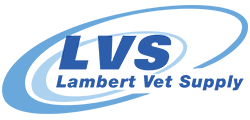Re-Sorb
By
Loading reviews...
Your price:
$4.19
$3.35
Availability:
In stock
Reference: 009PFZ01-64
Size
64 g
Share

California Prop 65 WARNING: Cancer and Reproductive Harm - www.p65warnings.ca.gov
Product description
The 3 main causes of calf scours and resulting dehydration are bacteria (E. coli and Salmonella, etc.), viruses, and nutritional factors. In all cases, there is a loss of water and electrolytes due to the scours, which can lead to severe dehydration and death. Generally, whatever the cause of the scours, dehydration is the main cause of death. When fecal loss of water exceeds the water intake, dehydration occurs. This can be corrected with administration of either oral or intravenous fluids. In the severely dehydrated calf, intravenous administration is the route of choice. Oral rehydration is of particular value as it permits the livestock owner to start rehydration therapy at the initial signs of scours which, in many cases, will reduce the severity of the condition. Re-Sorb also provides the owner with a practical method of following up intravenous therapy. Re-Sorb formula contains the following ingredients: sodium chloride 8.82 grams, potassium phosphate 4.2 grams, citric acid, anhydrous 0.5 grams, potassium citrate 0.12 grams, aminoacetic acid (glycine) 6.36 grams and glucose 44 grams. Osmolarity of the reconstituted solution is approximately 315 mOsm/kg. The pH of the reconstituted solution is approximately 4.3.
Oral glucose/glycine compounds have been used with excellent success to treat dehydration accompanying human cholera for many years.1-3 The rationale for oral rehydration therapy is based upon the active absorption of glucose and glycine when given orally to scouring animals. Their absorption is linked to the simultaneous absorption of sodium and water. This principle has been verified in scouring animals.4 E. coli produces scours by secreting toxins in the small intestine. These toxins, while causing profuse secretion of water and electrolytes, have no effect on glucose/glycine absorption in the calf.5 When Re-Sorb is administered, the glucose/glycine along with the water and sodium are absorbed resulting in a net gain in water thereby correcting the dehydration.
In diarrhea caused by viruses, the disease process causes a flattening of the intestinal mucosa which reduces digestion and absorption of milk. The undigested milk passes into the colon where bacterial fermentation results in additional diarrhea.6 The replacement of milk with Re-Sorb for 2 days followed by a gradual re-introduction of milk mixed with Re-Sorb, provides an opportunity for the gastrointestinal mucosa to rest. Since Re-Sorb is readily absorbed, it provides the livestock owner with an ideal first feed for the stressed or newly purchased calf. It is widely believed that it is often beneficial to starve or only provide half of the initial feeding of milk to newly purchased calves to reduce stress on the gastrointestinal system. Re-Sorb may be given as the initial feeding following by a 50:50 mixture of Re-Sorb and milk at the second feeding to reduce stress on the gastrointestinal tract.
Re-Sorb is a readily absorbed source of fluids and electrolytes. It is a convenient and effective means of increasing absorption of water, energy sources, and electrolytes. Re-Sorb is indicated for use in the control of dehydration associated with diarrhea (scours) in calves, including veal calves. Re-Sorb may be used by the livestock owner as an early treatment at the first signs of scouring. It may also be used as follow-up treatment for the dehydrated calf following intravenous fluid therapy. Re-Sorb, because of its ready source of fluid and electrolytes, makes it an ideal first feed (upon arrival) for newly purchased or severely stressed calves.
